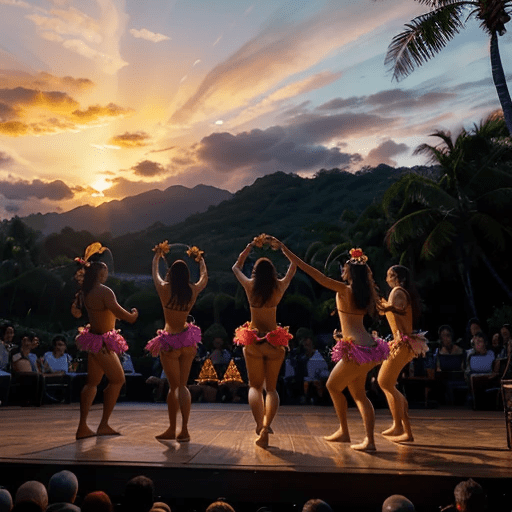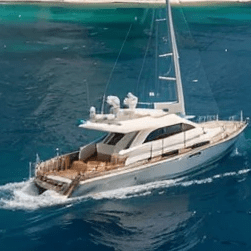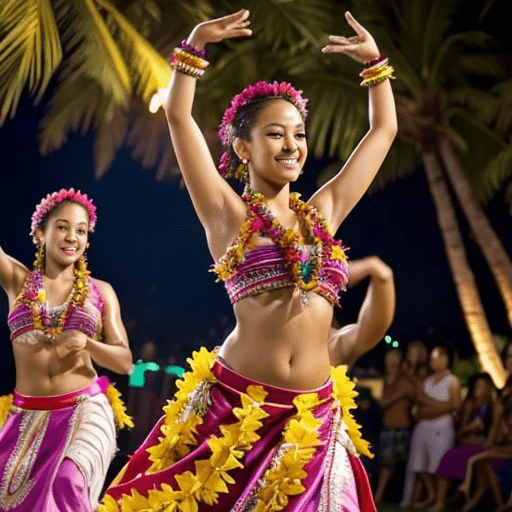Are you looking for the top national parks in Hawaii to explore? Look no further you’ve come to the right place.
Hawaii, known for its stunning landscapes, vibrant culture, and rich history, has some of the most spectacular national parks in the world.
These parks offer a unique blend of adventure, serenity, and breathtaking beauty, making them a must-visit for anyone seeking a memorable outdoor experience.
Why Visit National Parks in Hawaii?
From the fiery spectacle of erupting volcanoes to the tranquility of lush rainforests, national parks in Hawaii offer diverse landscapes that are truly unforgettable.
You might find yourself hiking through verdant trails one day, and snorkeling in crystal-clear waters the next.
The natural beauty of these parks is, without a doubt, a feast for the senses.
National Parks in Hawaii: Rich Cultural History
But Hawaii’s national parks aren’t just about nature’s splendor. They also provide a window into the rich cultural history of the Hawaiian people.
Whether you’re exploring ancient Polynesian temples or learning about the island’s native flora and fauna, your trip to these parks is bound to be an enlightening journey through time.
#1. Haleakalā National Park, Maui
Stretching across the east of Maui, Haleakalā National Park is a mesmerizing blend of rugged volcanic landscapes, lush greenery, and diverse ecosystems.

Named after the Haleakalā volcano, which translates to “House of the Sun” in Hawaiian, the park covers an area of over 33,000 acres, offering plenty of exploration opportunities for adventurers.
The Haleakalā volcano, dormant for centuries, is undoubtedly the centerpiece of the park. The summit of this volcano towers over 10,000 feet above sea level, providing panoramic views of the entire island and beyond.
Many visitors embark on an early morning journey to the summit, braving the cold to witness a sunrise that is nothing short of magical.
As the sun peeks over the horizon, painting the sky with hues of gold, orange, and pink, you’ll understand why it’s considered an unforgettable experience.
But Haleakalā is more than just a sunrise viewing point. Its crater, spanning 7 miles across, is a sight to behold. Despite its lunar-like appearance, the Haleakalā crater is home to a number of native Hawaiian species.
Hiking through the crater’s trails, you may encounter the endemic Haleakalā silversword, a plant that grows nowhere else in the world.
Plan Your Hawaiian Adventure Today
Camper Vans | Surf Boards | Kayaks | Snorkel Gear | Itineraries | Campsites | More…
The park also features lush, tropical rainforests teeming with life. Wander along the Kīpahulu District’s Pipiwai Trail, and you’ll encounter bamboo forests, cascading waterfalls, and freshwater pools.
It’s a stark contrast to the stark volcanic landscape at the summit and a testament to the park’s ecological diversity.
Moreover, Haleakalā National Park carries significant cultural value. It’s steeped in Hawaiian legends and history, offering visitors a chance to learn about the island’s rich heritage.
The park hosts cultural demonstrations where you can learn about traditional Hawaiian practices such as hula, lei making, and Hawaiian games.
In a nutshell, Haleakalā National Park offers something for everyone – from breathtaking sunrises and scenic hikes to fascinating cultural insights.
Whether you’re an avid hiker, a nature lover, or a history buff, a visit to this national park is sure to leave you with lasting memories of Hawaii’s unique charm.
Remember, when visiting Haleakalā, it’s important to respect the land and its cultural significance. Stick to designated trails, leave no trace, and consider the sacredness of the area to the native Hawaiian people.
#2. Hawaii Volcanoes National Park, Big Island

Situated on the southeastern part of the Big Island, Hawaii Volcanoes National Park is a captivating testament to the power of nature.
Spanning over 333,000 acres, this UNESCO World Heritage Site is famous for housing two of the world’s most active volcanoes: Kīlauea and Mauna Loa.
Kīlauea, known as the world’s most active volcano, has been continuously erupting since 1983.
Its fiery displays and flowing lava have reshaped the park’s landscape numerous times, giving visitors a firsthand look at the planet’s raw, formative power.
Don’t miss the opportunity to visit the Kīlauea Visitor Center to learn more about the volcano’s history and ongoing activity.
Mauna Loa, the other superstar of the park, is the world’s largest shield volcano. It rises over 13,000 feet above sea level, and its underground base, when measured from the bottom of the ocean, makes it the tallest mountain on Earth.
Hiking up the slopes of Mauna Loa is a challenging yet rewarding experience, offering stunning views and unique volcanic landscapes.
One of the park’s most remarkable features is the Thurston Lava Tube, also known as Nāhuku.
This tunnel-like structure was formed by flowing lava, which left behind a hollow tube as it cooled and hardened. Walking through this lava tube, you’ll get a sense of the immense heat and pressure that once flowed where you stand.
But the Hawaii Volcanoes National Park isn’t just about fiery landscapes. It’s also home to a diverse range of flora and fauna. Amidst the lava rocks, you’ll find patches of lush rainforests teeming with native species. Look out for the nēnē, the Hawaiian goose, which is the state bird of Hawaii and a frequent sight in the park.
Furthermore, the park is steeped in rich cultural significance. For Native Hawaiians, it is a sacred place that is home to deities and the site of many ancient legends.
At the Pu’u Loa Petroglyphs site, you can observe thousands of rock carvings, a testament to the people who have called this island home for centuries.
Visiting Hawaii Volcanoes National Park is like stepping into another world. From witnessing an active volcano to walking through a lava tube, the park offers a glimpse into the Earth’s primal forces in a way few other places can.
As with all visits to such significant natural sites, it’s crucial to respect the park’s rules to preserve its delicate ecosystems and cultural sites. Remember to stay safe, stay on marked trails, and leave no trace behind.
#3. Kalaupapa National Historical Park, Molokai

Nestled on the northern coast of Molokai, Kalaupapa National Historical Park is a place that intertwines heart-wrenching history with the breathtaking beauty of Hawaii’s natural landscapes.
The park’s primary mission is to honor and preserve the experiences of the people who were forced to live in isolation here due to leprosy, also known as Hansen’s disease.
From 1866 until 1969, Kalaupapa was a place of forced exile for those diagnosed with leprosy. During this time, over 8,000 individuals from across Hawaii were sent to live in this remote peninsula, separated from their families and their homes.
Today, the park serves as a testament to their resilience and spirit in the face of such adversity.
As you explore the park, you’ll come across several historic structures, including St. Philomena Church, associated with Saint Damien, a Belgian priest who devoted his life to caring for those affected by the disease. The church stands as a poignant symbol of compassion and selfless service.
Though Kalaupapa’s history is undeniably somber, it’s also a place of stunning natural beauty. The park is located on a peninsula, surrounded by the highest sea cliffs in the world, which drop dramatically into the Pacific Ocean.
These cliffs, some of which rise over 3,000 feet, provide an awe-inspiring backdrop that contrasts sharply with the park’s painful past.
The park is also home to a rich diversity of flora and fauna, including several endemic species. Amid the rugged cliffs and serene beaches, you might spot Hawaiian monk seals basking in the sun or native plants blooming in vibrant colors.
To visit Kalaupapa National Historical Park, you need to either participate in a guided mule tour or receive an invitation from one of the few remaining residents, as independent travel within the park is not permitted.
This is to ensure the privacy and respect of the residents and to preserve the historical and cultural significance of the area.
Visiting Kalaupapa is a deeply moving experience, offering a stark reminder of a tragic chapter in Hawaii’s history, set against the backdrop of the islands’ incredible natural beauty. It’s a place that fosters contemplation, respect, and ultimately, understanding.
#4. Puʻuhonua o Hōnaunau National Historical Park, Big Island

Puʻuhonua o Hōnaunau National Historical Park on the Big Island of Hawaii presents an extraordinary tribute to the rich tapestry of Hawaiian history.
Revered as the City of Refuge, this park shines a light on the captivating aspects of ancient Hawaiian culture, providing an abundance of historical revelations.
Throughout its history, Puʻuhonua o Hōnaunau served as a sanctuary, offering solace to those who had transgressed the kapu, the sacred traditional laws of the land, as well as to those who had faced defeat in battle.
It became a safe haven where individuals could seek shelter, regain their bearings, and reclaim their lives free from the fear of retaliation.
Immersed within the park’s grounds are remarkable structures that offer tantalizing glimpses into the customs and ways of life of ancient times.
One of the most striking features among them is the Great Wall, an imposing lava rock structure standing 12 feet high and spanning 17 feet in width.
This mighty edifice once delineated the boundary separating the royal grounds from the refuge area, leaving an indelible mark on the landscape.
Plan Your Hawaiian Adventure Today
Camper Vans | Surf Boards | Kayaks | Snorkel Gear | Itineraries | Campsites | More…
Visitors are invited to embark on explorations of the park’s ancient sites, including the revered Hale o Keawe, a structure closely associated with the memory of esteemed individuals.
While a replica now stands in its place, it proudly exhibits intricate wooden carvings, known as ki’i, which artfully exemplify the craftsmanship of that era.
The park’s significance is further enhanced by its well-preserved fishponds, which offer an awe-inspiring glimpse into the advanced aquaculture practices of ancient Hawaiians.
The ‘Ale’ale’a and Waiu’o’loku fishponds, once abundant sources of sustenance for the local community, stand today as a testament to the ingenuity and resourcefulness of Hawaii’s ancestors.
Adding to its allure, the park boasts the captivating Ki’ilae Village, a thriving agricultural and fishing community that flourished from the 1400s until the early 20th century.
As visitors wander through the remnants of this village, they will encounter the enduring lava rock walls that once sheltered its dwellings, storage pits that stored its bounties, and even an ancient game board etched into the rocks.
#5. Kaloko-Honokōhau National Historical Park, Big Island

Situated in the Kona District on the Big Island of Hawai’i, Kaloko-Honokōhau National Historical Park beckons visitors with its rich cultural and archaeological significance. Designated as a National Historic Landmark, the park’s crown jewel is the Honokōhau Settlement, an exceptional archaeological site that captures the essence of ancient Hawaiian life.
Established on November 10, 1978, the park’s mission is to preserve, protect, and interpret the traditional native Hawaiian activities and culture that once thrived in this region.
It encompasses two of the four distinct ahupua’a, the traditional land divisions extending from the mountains to the sea.
Despite the arid lava rock landscape, known as kekaha ‘a’ole wai or “lands without water” in Hawaiian, the area attracted settlements for centuries due to its bountiful marine life.
At the heart of the park lie the impressive Kaloko fishponds. The term “Kaloko” translates to “the pond” in Hawaiian. Spanning 750 feet, the seawall of these fishponds boasts a width exceeding 30 feet and a height of 6 feet.
Built without the use of mortar, the stones are meticulously arranged with angles and gaps that skillfully deflect the ocean’s waves, rivaling the effectiveness of many modern concrete seawalls.
Within the park, the ‘Aimakapā fishpond serves as a vital wetland habitat, providing sanctuary for native avian species such as the koloa maoli (Hawaiian duck), ‘alae ke’oke’o (Hawaiian coot), āe’o (Hawaiian stilt), and au’ku’u (black-crowned night heron).
Ongoing reforestation efforts are underway to remove invasive non-native plants and restore the area to its natural splendor.
Honokōhau, an ancient settlement nestled in the southern part of the park, showcases an array of historical structures.
From loko i’a (ancient Hawaiian aquaculture fishponds) and kahua (house site platforms) to ki’i pōhaku (petroglyphs) and hōlua (stone slides), the remnants of this captivating area offer a window into the past.
Notably, the ‘Ai’opio Fishtrap, a 1.7-acre pond enclosed by a stone wall along the naturally curved shoreline of a bay, provided an ingenious means to catch young fish as they entered from the sea.
For those seeking recreational activities, Kaloko-Honokōhau National Historical Park delivers an abundance of options. Restored trails, including a section of the Māmalahoa Trail spanning about one mile, allow visitors to traverse a pathway that evolved over time into the Hawaii Belt Road encircling the entire island.
The coastal trail forms part of the renowned Ala Kahakai National Historic Trail. Furthermore, the Honokōhau boat harbor offers a launching point for traditional canoes and fishing boats, as well as opportunities for scuba diving and snorkeling tours in the captivating waters of the area.
A visit to Kaloko-Honokōhau National Historical Park provides more than just a glimpse into ancient Hawaiian life.
It invites visitors to immerse themselves in a beautiful natural setting while partaking in a wide range of outdoor recreational activities. It is a place where history and nature converge, offering a truly enriching and unforgettable experience.
#6. Pu’ukoholā Heiau National Historic Site, Big Island

Pu’ukoholā Heiau National Historic Site, located on the Big Island of Hawaii, is a significant cultural and historical destination that offers visitors a glimpse into the rich heritage of the Hawaiian people.
At this site, you can explore and appreciate one of the largest restored temples in Hawaii, known as Pu’ukoholā Heiau.
Constructed in the late 18th century, Pu’ukoholā Heiau holds great importance in Hawaiian history.
It was commissioned by King Kamehameha I, also known as Kamehameha the Great, who sought to unite the Hawaiian Islands under his rule.
The temple served as a place of worship and played a pivotal role in Kamehameha’s rise to power.
Pu’ukoholā Heiau is an impressive structure made primarily of lava rock and stands as a testament to the advanced engineering and architectural skills of the ancient Hawaiians.
The temple spans over 224 feet in length and 100 feet in width, with its walls reaching up to 30 feet in height. Its massive size and intricate construction make it a remarkable example of traditional Hawaiian temple design.
Visiting this historic site allows you to explore not only the physical structure of Pu’ukoholā Heiau but also the surrounding landscape, which includes breathtaking views of the Pacific Ocean and the rugged coastline of the Big Island.
You can take a leisurely stroll around the temple grounds, which feature well-maintained pathways, informational signage, and exhibits that provide insights into the history and significance of the site.
Plan Your Hawaiian Adventure Today
Camper Vans | Surf Boards | Kayaks | Snorkel Gear | Itineraries | Campsites | More…
In addition to Pu’ukoholā Heiau itself, the national historic site offers other points of interest for visitors.
You can discover the ruins of Mailekini Heiau, a smaller temple located nearby, as well as Hale o Kapuni, a sacred stone enclosure that served as a royal residence. These additional structures contribute to the overall historical and cultural value of the site.
Whether you have a deep interest in Hawaiian history or simply appreciate awe-inspiring architecture and natural beauty, a visit to Pu’ukoholā Heiau National Historic Site is an enriching experience.
#7. Pearl Harbor National Memorial, Oahu

The Pearl Harbor National Memorial, located on the island of Oahu in Hawaii, stands as a solemn tribute to the events that unfolded on December 7, 1941, when the Japanese attacked the U.S. naval base at Pearl Harbor.
This historic site provides a deeply moving and educational experience, allowing visitors to honor the memory of those who lost their lives and to gain a deeper understanding of the impact of World War II.
One of the main attractions within the memorial is the USS Arizona Memorial. This iconic structure is built over the sunken battleship USS Arizona, which serves as the final resting place for over 1,000 sailors and Marines who were aboard during the attack.
Visitors can take a boat ride to the memorial, which is situated directly above the sunken ship. The experience offers a poignant opportunity to pay respects to the fallen and to reflect on the tragic events of that fateful day.
The memorial also includes the Battleship Missouri, also known as the “Mighty Mo.” This imposing battleship, which played a significant role in World War II, serves as a floating museum.
Visitors can explore the decks, take guided tours, and learn about the historical significance of the ship. The Surrender Deck, where the Japanese formally surrendered, is a particularly notable spot to visit, as it marks the end of the war in the Pacific.
Within the memorial complex, there are various exhibits and museums that provide a comprehensive overview of the attack on Pearl Harbor and its aftermath. The Pearl Harbor Visitor Center offers a wealth of information through displays, artifacts, photographs, and personal stories, allowing visitors to gain a deeper understanding of the historical context and the impact of the attack.
Additionally, the memorial hosts a number of educational programs, including documentaries, guided tours, and interactive exhibits.
These activities offer visitors an opportunity to delve into the personal stories of the individuals involved in the attack, as well as the broader historical and geopolitical implications of World War II.
A visit to the Pearl Harbor National Memorial is not only a chance to pay homage to the lives lost but also an opportunity to reflect on the resilience and unity that emerged from the tragedy.
The site serves as a reminder of the sacrifices made by those who served and highlights the importance of preserving and learning from history.
#8. Ala Kahakai National Historic Trail, Big Island

The Ala Kahakai National Historic Trail on the Big Island of Hawaii is a captivating journey that allows visitors to immerse themselves in the rich history and natural beauty of the Hawaiian Islands.
Spanning approximately 175 miles, this trail serves as a living testament to the traditional Hawaiian culture and provides a unique opportunity to explore and appreciate the island’s diverse landscapes.
As you embark on the Ala Kahakai Trail, you’ll traverse a remarkable route that connects a variety of national and state parks, ancient Hawaiian villages, historic sites, and stunning coastal areas.
This trail is designed to preserve and showcase the cultural significance of the region, allowing visitors to walk in the footsteps of the indigenous people who once called these lands home.
Throughout the trail, you’ll encounter a multitude of awe-inspiring sights and experiences. From rugged lava fields to pristine white sand beaches, dense forests to expansive lava tubes, the trail offers a diverse range of natural wonders to explore.
Along the way, you’ll also have the opportunity to observe unique flora and fauna, including native plants and bird species that are found only in Hawaii.
One of the highlights of the Ala Kahakai Trail is the chance to visit ancient Hawaiian villages and archaeological sites.
These cultural landmarks offer a glimpse into the daily life and customs of the Native Hawaiians who lived here centuries ago.
You can witness the remains of heiau (sacred temples), fishponds, petroglyphs, and other archaeological artifacts that reveal the rich cultural heritage of the Hawaiian people.
As you journey along the trail, you’ll have the opportunity to engage with interpretive signs and displays that provide historical and cultural context, allowing you to deepen your understanding of the land and its significance.
The trail offers a unique blend of natural beauty and cultural exploration, making it a truly enriching experience.
Whether you choose to hike a short section of the trail or embark on a multi-day trek, the Ala Kahakai Trail promises unforgettable experiences and a deep connection to the Hawaiian heritage.
It is a remarkable way to explore the Big Island and to appreciate the interplay between nature and culture that has shaped the Hawaiian Islands for centuries.
#9. War In The Pacific National Historical Park, Guam

War in the Pacific National Historical Park, located on the island of Guam, is an important site that offers visitors a deeper understanding of the Pacific theater during World War II.
While not situated in Hawaii, it is part of the Pacific Island Parks system and contributes to the comprehensive narrative of the war in the Pacific.
Guam, a U.S. territory, was invaded and occupied by Japanese forces shortly after the attack on Pearl Harbor.
The War in the Pacific National Historical Park stands as a testament to the battles fought on the island and the significant role Guam played in the overall war effort.
One of the key attractions within the park is the Asan Bay Overlook, which provides visitors with a panoramic view of the landing beaches and the surrounding landscape.
From this vantage point, you can reflect upon the historical events that unfolded during the intense fighting to retake Guam from Japanese control.
Plan Your Hawaiian Adventure Today
Camper Vans | Surf Boards | Kayaks | Snorkel Gear | Itineraries | Campsites | More…
Interpretive signs and displays offer valuable insights into the strategies employed by both sides and the challenges faced by the U.S. forces.
The park also features various historical sites, including the Fonte Plateau, which served as a defensive position for the Japanese, and the Piti Guns, which were once coastal defense guns utilized by the Japanese forces.
These remnants of war serve as a powerful reminder of the sacrifices made by soldiers on both sides and the lasting impact of the conflict on the island.
Additionally, the park provides opportunities for visitors to explore the rich cultural heritage of Guam.
Chamorro Village, a recreated Chamorro village within the park, offers a glimpse into the traditional lifestyle of the indigenous Chamorro people, who have inhabited Guam for thousands of years.
Through demonstrations, exhibits, and cultural programs, visitors can gain a deeper appreciation for the island’s vibrant history and heritage.
Furthermore, the park hosts educational programs, guided tours, and events that delve into the personal stories of individuals who experienced the war firsthand.
Through these immersive experiences, visitors can better understand the complexities of the conflict and the human experiences of those involved.
Visiting War in the Pacific National Historical Park provides a unique opportunity to honor the sacrifices made during World War II and gain a broader perspective on the Pacific theater.
It serves as a reminder of the bravery and resilience of the soldiers and civilians who endured the hardships of war. The park’s dedication to preserving history and sharing the stories of those affected ensures that the lessons learned from this period are not forgotten.
#10. American Memorial Park, Northern Mariana Islands

The American Memorial Park, located in the Northern Mariana Islands, is a significant historical site that pays tribute to the sacrifices made during the Marianas Campaign of World War II.
While not situated in Hawaii, it is an integral part of the Pacific Islands Parks system, offering visitors a profound understanding of the region’s wartime history.
The Marianas Campaign, which took place in 1944, was a critical military operation that aimed to secure the Mariana Islands, including Saipan, Tinian, and Guam, from Japanese occupation.
The American Memorial Park stands as a solemn memorial to the soldiers and civilians who lost their lives during this campaign.
The park’s centerpiece is the Memorial Court, a beautifully designed area featuring a series of granite panels engraved with the names of the servicemen and women who made the ultimate sacrifice.
These names serve as a powerful reminder of the human cost of war and honor the bravery and dedication of those who fought to liberate the islands.
Within the park, visitors can explore various historical exhibits and displays that provide insights into the Marianas Campaign and the overall Pacific theater of World War II.
The Visitor Center offers an array of interpretive exhibits, artifacts, photographs, and personal stories that shed light on the experiences of both American and Japanese forces during the campaign.
In addition to its historical significance, the American Memorial Park offers recreational opportunities and a serene natural setting.
The park features well-maintained walking trails, picnic areas, and lush gardens where visitors can relax and reflect upon the sacrifices made by those who fought in the Marianas Campaign.
The peaceful surroundings provide a tranquil atmosphere for contemplation and remembrance.
The park also offers educational programs and events, including guided tours, cultural demonstrations, and commemorative ceremonies.
These activities provide visitors with a deeper understanding of the local culture, the impact of war on the Northern Mariana Islands, and the importance of preserving the memory of past sacrifices.
Plan Your Hawaiian Adventure Today
Camper Vans | Surf Boards | Kayaks | Snorkel Gear | Itineraries | Campsites | More…
A visit to the American Memorial Park is a powerful and educational experience, allowing visitors to pay homage to the fallen, gain a deeper appreciation for the history of the Marianas Campaign, and reflect upon the enduring impacts of World War II in the Pacific.
It serves as a place of remembrance, reconciliation, and gratitude, ensuring that the sacrifices made during the war are never forgotten.
And that about sums it up on the top 10 national parks in Hawaii
National Parks in Hawaii FAQs:
There are two national parks in Hawaii: Haleakalā National Park in Maui and Hawaii Volcanoes National Park in the Big Island. There are also other national historical parks and sites that you can explore.
The best time to visit depends on what you want to do. However, generally, the weather in Hawaii is pleasant all year round, making the national parks a great destination at any time of the year.
Yes, there are entrance fees for the national parks. However, the fees go toward the maintenance and preservation of these natural and historical treasures.
Yes, camping is allowed in certain areas of the national parks. However, you’ll need to obtain a permit and follow the parks’ camping regulations.
Be sure to bring essentials like water, snacks, sunscreen, and suitable clothing. A good pair of hiking shoes is also a must if you plan to explore the parks’ trails.
What national parks in Hawaii are you most excited to check out? Let us know down in the comments!






